This project focuses on enhancing the visitor experience at the Chester Beatty Museum through wayfinding, engagement, and immersive storytelling. By addressing challenges such as low footfall and limited visibility, the project explores how spatial design, interactive elements, and visual communication can create a more engaging and accessible experience for visitors.
Duration: 6 weeks
Context: Service Design Module, College Project (Year 2)
Problem Statement
Chester Beatty Museum is a hidden gem, but its discreet location results in low footfall and limited awareness among tourists and locals. This affects tourists who struggle to find it and staff working to increase engagement.
To address this, we propose enhanced wayfinding using visually striking artefacts as markers in public areas and a pop-up shop with merchandise, interactive elements, and social media-friendly photo opportunities. These solutions aim to boost visibility, attract more visitors, and enhance the museum’s presence in Dublin.
Research
The Chester Beatty is a modification of the existing building which was established in 1950, it was once a private library which housed the collections of mining magnate Sir Alfred Chester Beatty.
We visited the Chester Beatty Museum and explored surrounding areas such as Dame Street to identify potential challenges in the visitor experience.
Visitor Experience Map
Top 3 Problems with the Visitor Experience
1. Wayfinding lacks visitor enticement.
2. Experience is not engaging and immersive.
3. The building is quite hidden and there's opportunities around the area to entice potential visitors.
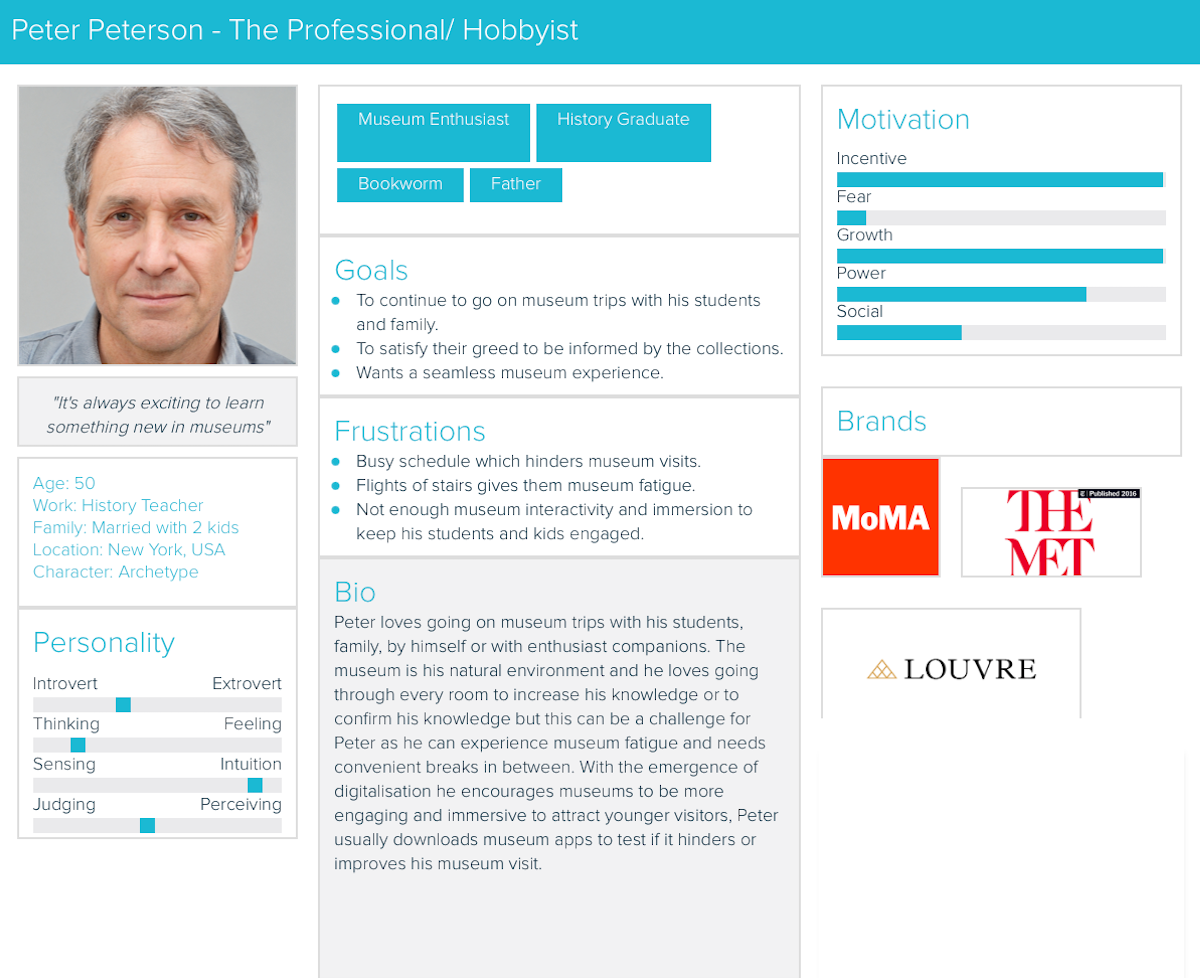
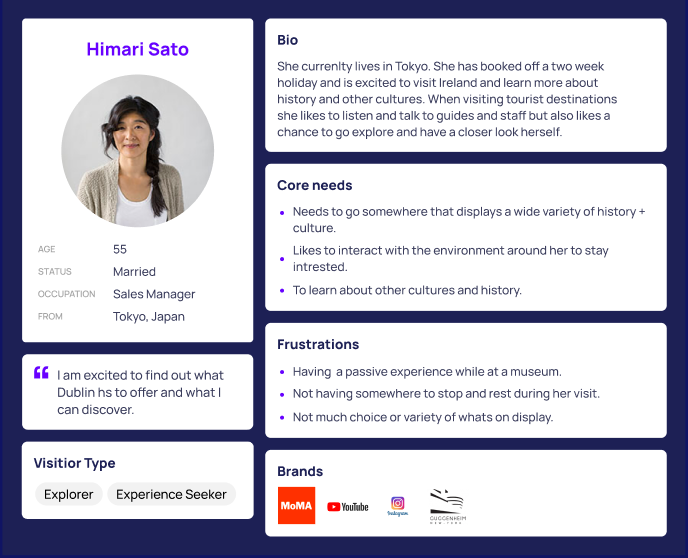
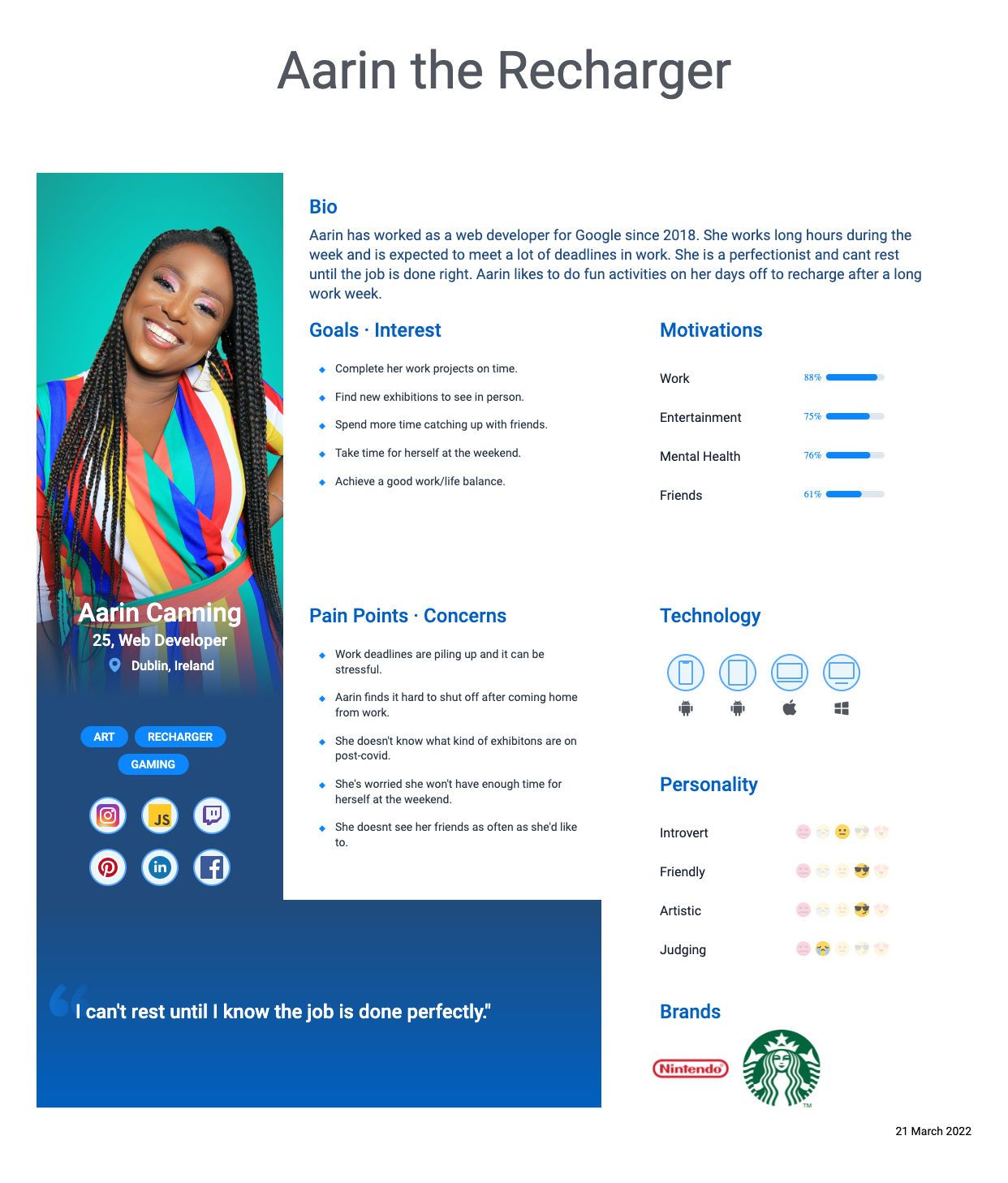
Design System
I followed the existing Chester Beatty design system to ensure a cohesive look in my proposed designs, incorporating elements like wooden textures, copper green tones, and a sans-serif font. The current system is already well-designed, with a clean, distinct color palette and textures, so rather than making unnecessary changes, I focused on enhancing what already works.
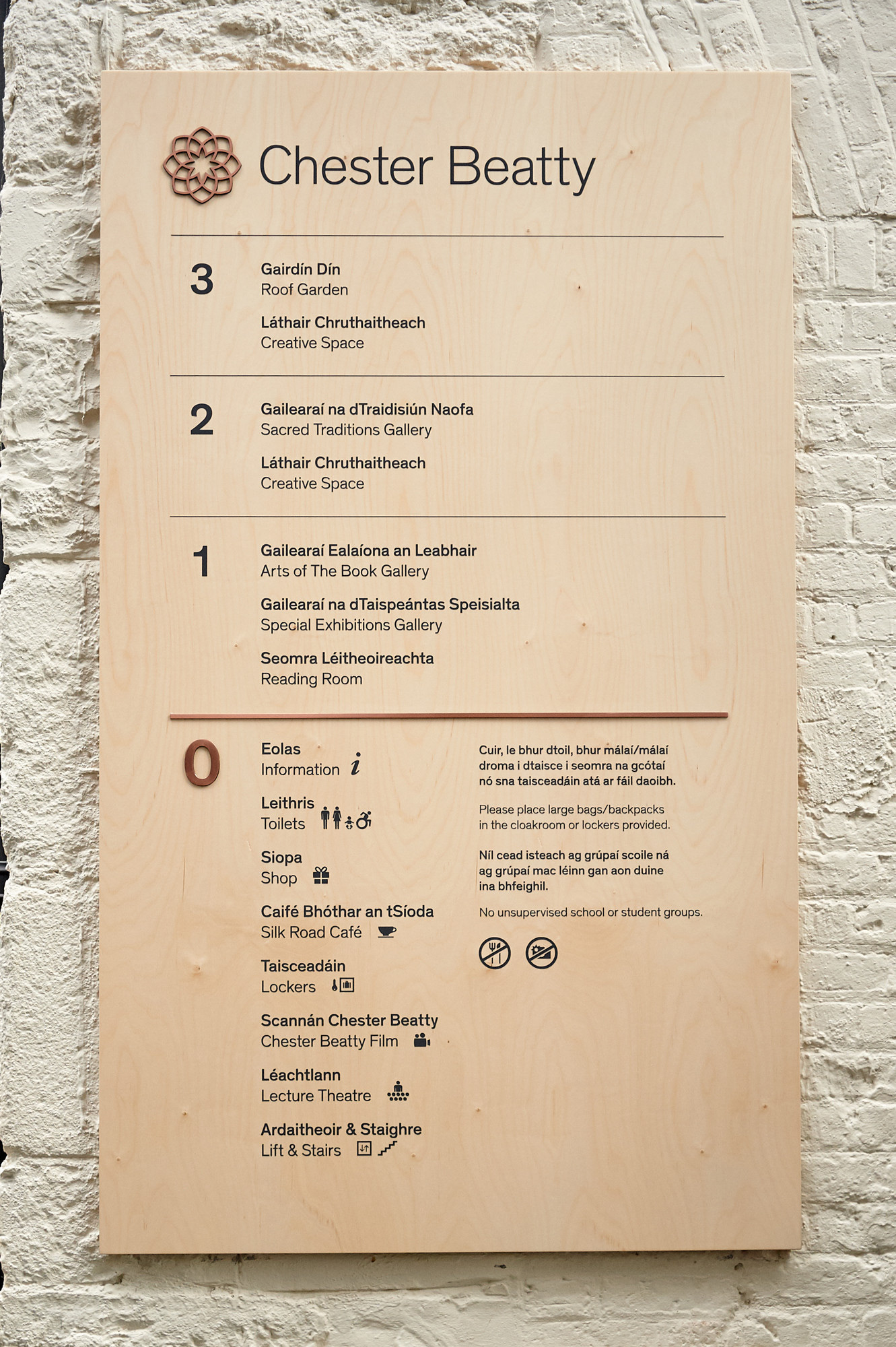
Metallic Copper & Copper Green were chosen as a nod to Sir Alfred Chester Beatty.
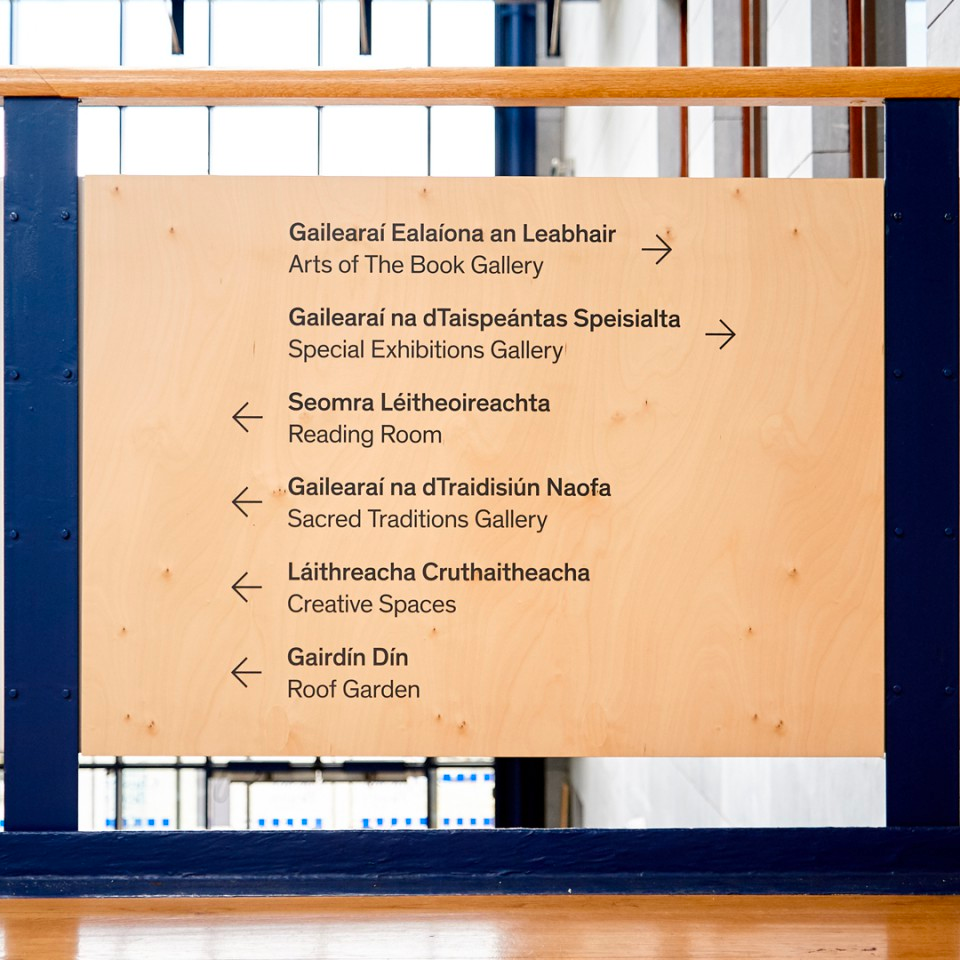
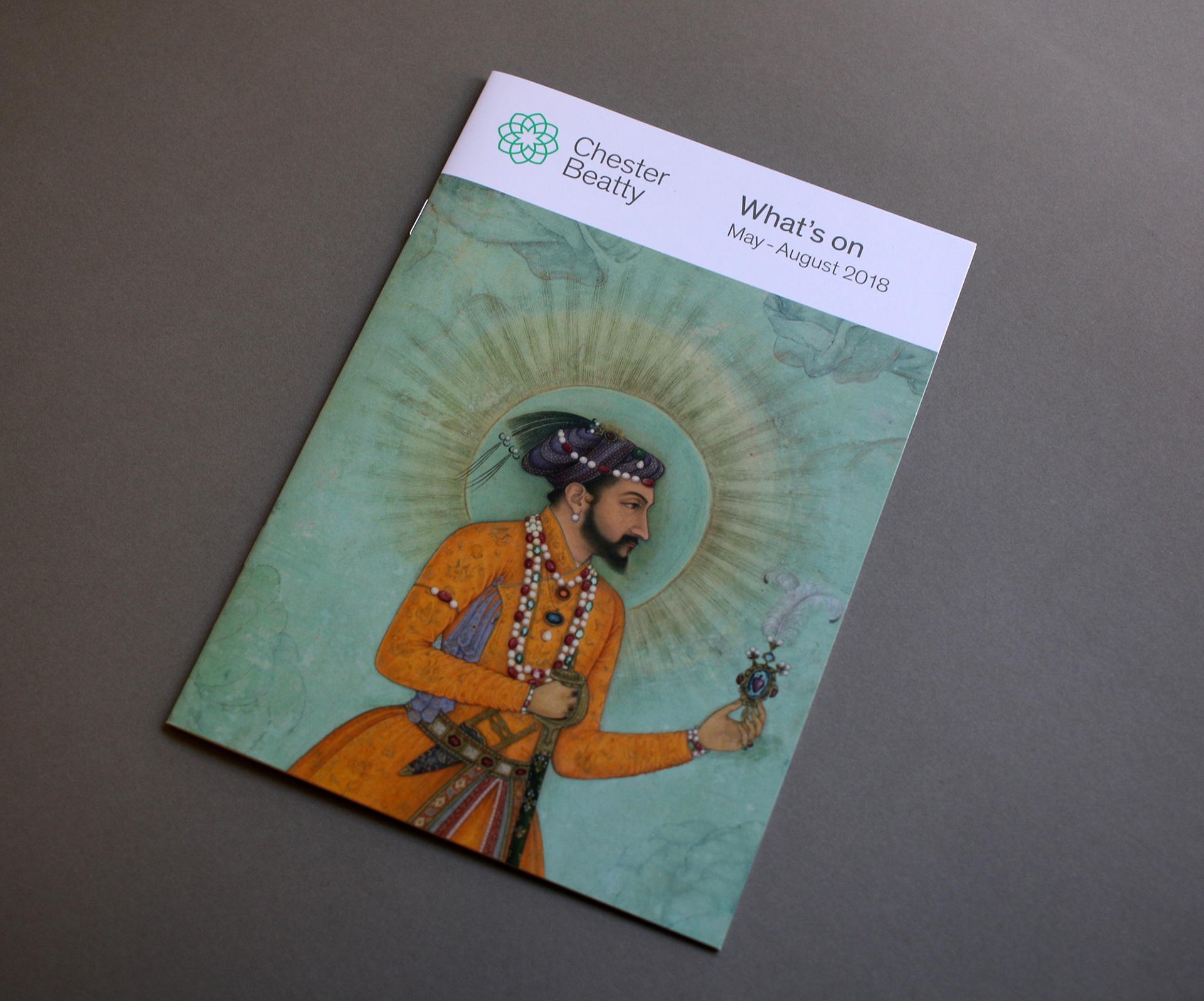
He made a large part of his fortune through mining copper.
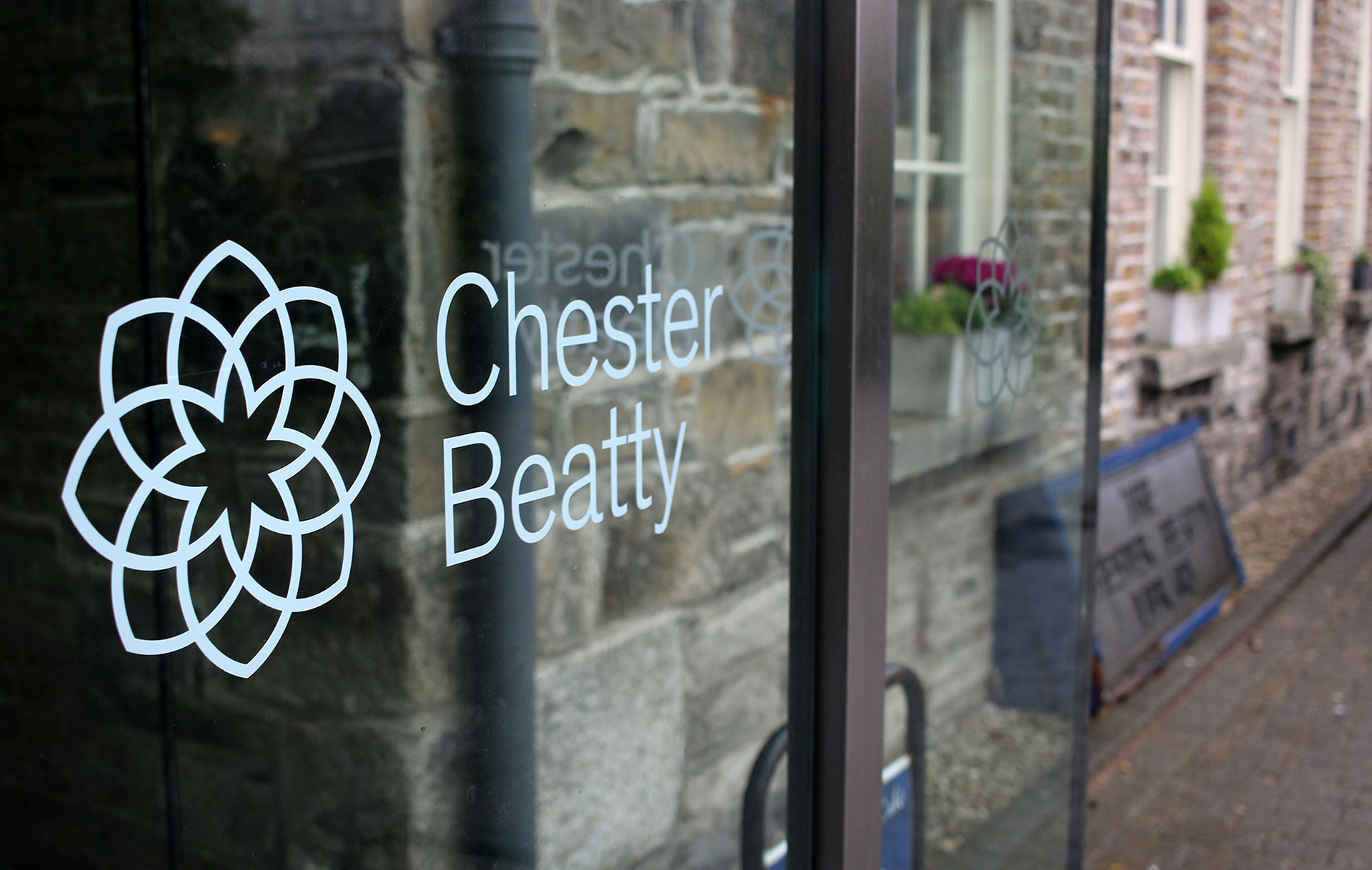
This mandala symbol can be found across the collection, in feudal Japanese, Islamic mosaic and Coptic design.
Final Outcomes
• Enhanced Wayfinding: Improved outdoor signage and visual markers to attract and guide potential visitors to the museum.
• Enhanced Visitor Experience: A pop-up shop featuring museum merchandise, interactive elements, and photo opportunities to boost awareness and engagement.
• Interpretive Installation: An immersive room designed to educate visitors while creating a visually engaging space for children, helping to reduce museum fatigue.
Enhanced Wayfinding
I found vacant walls around Dame Street that would display my proposed outdoor wayfinding signs.
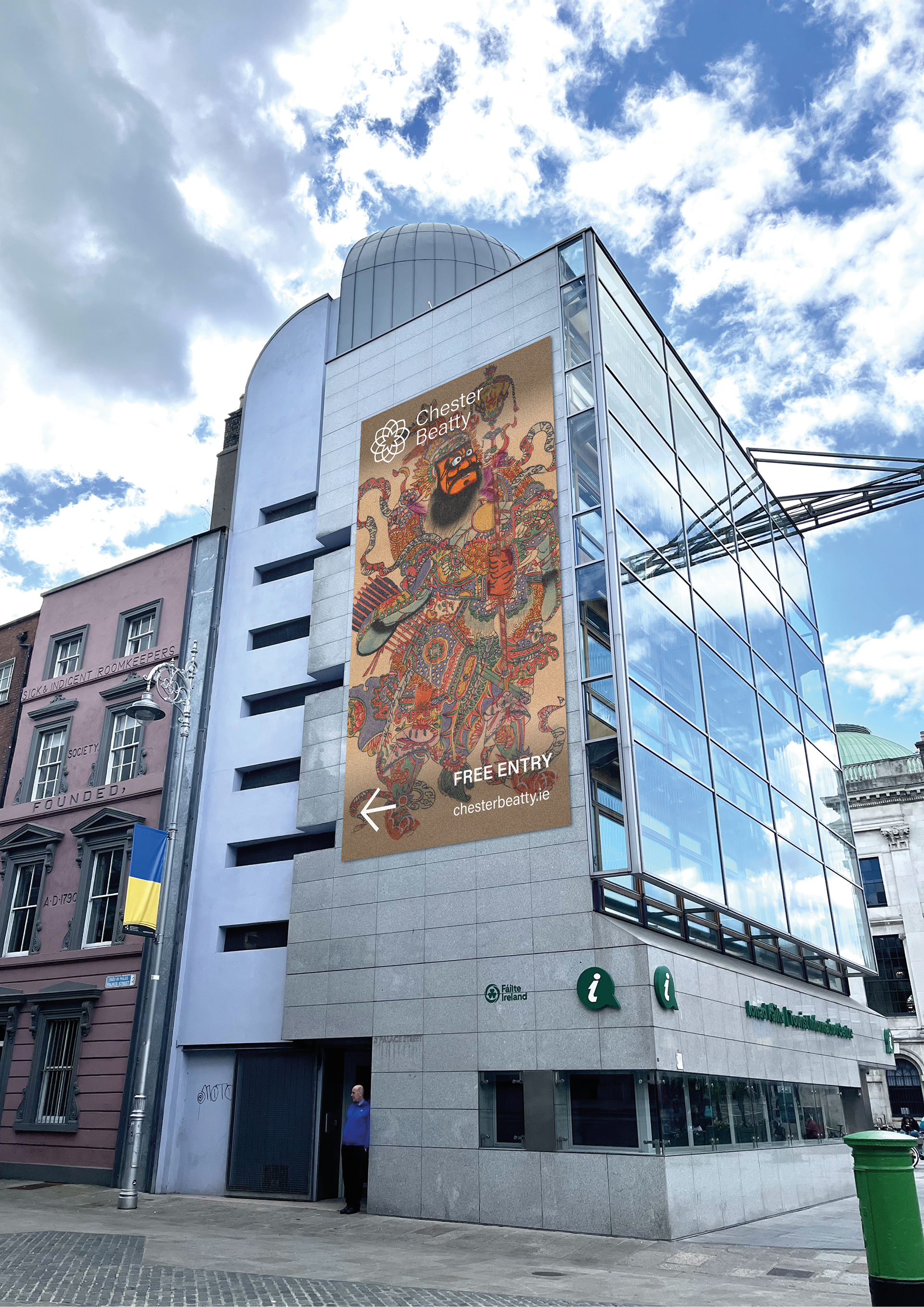
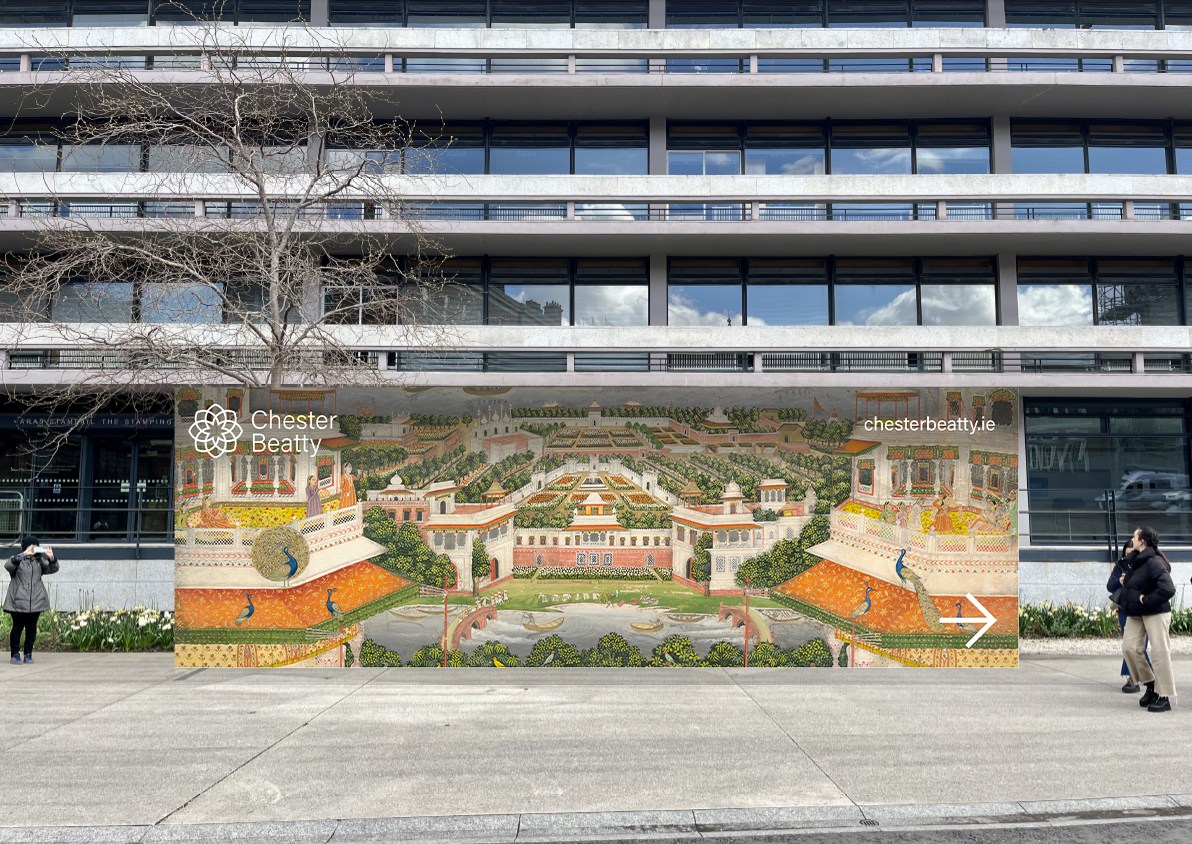
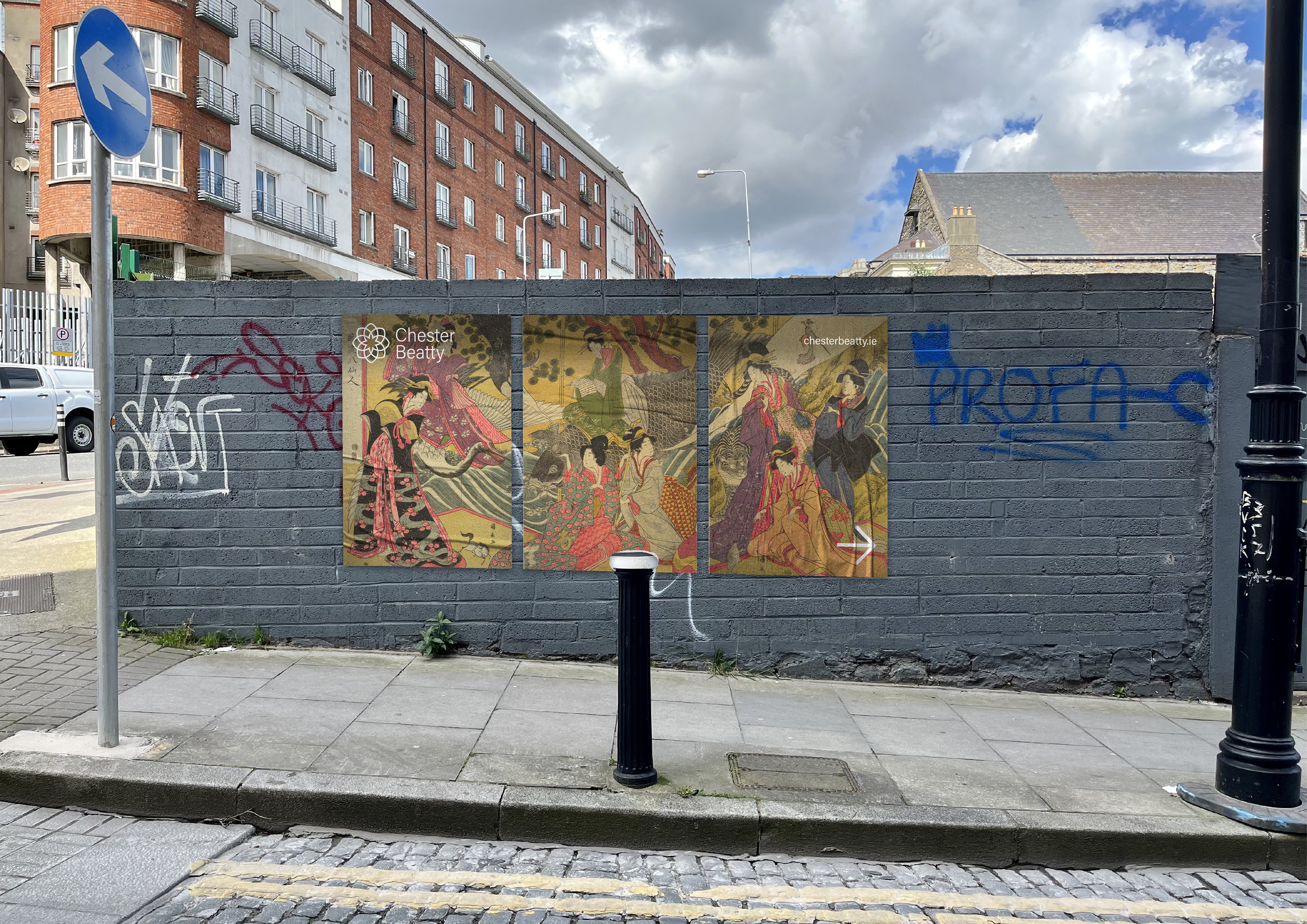
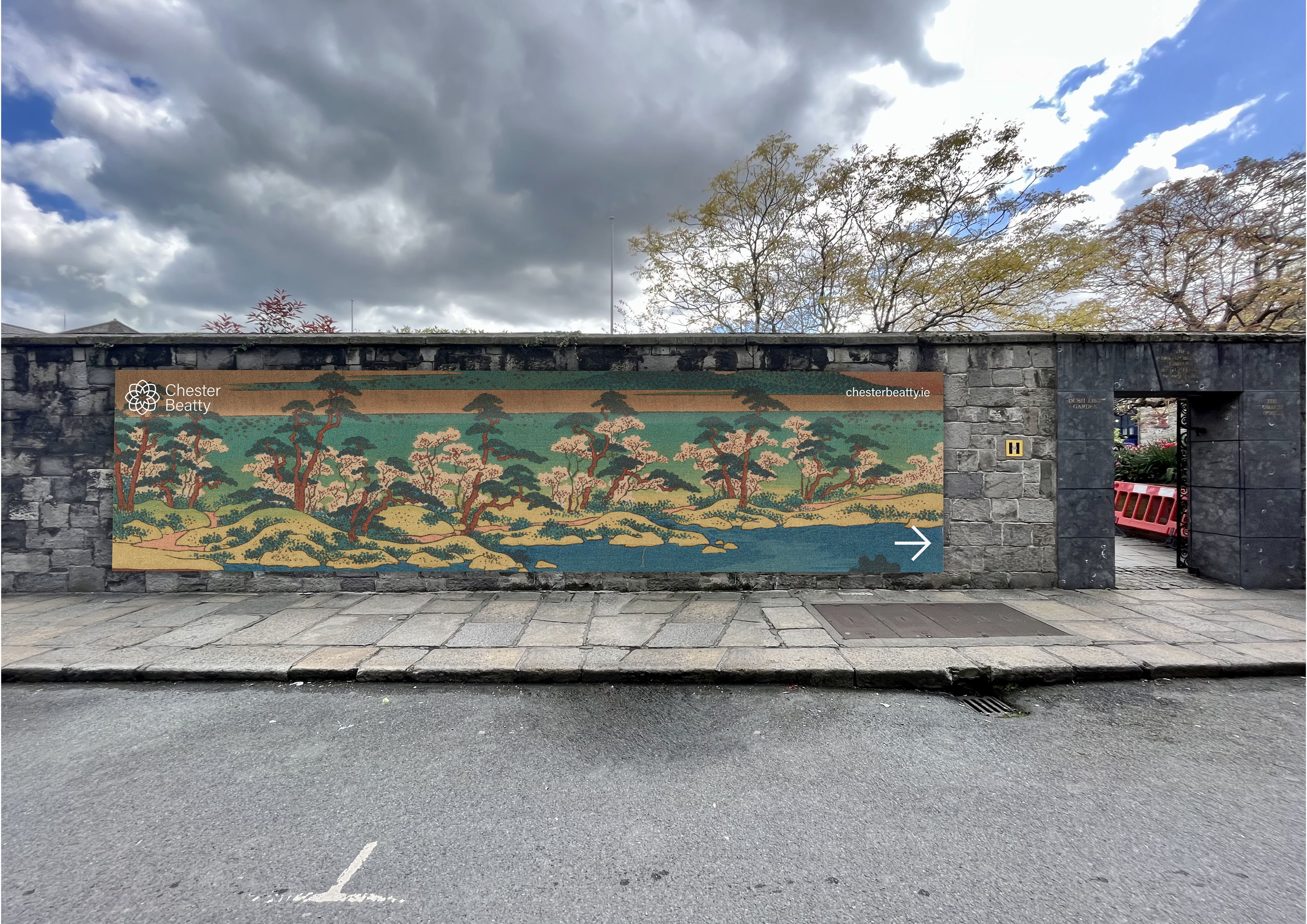
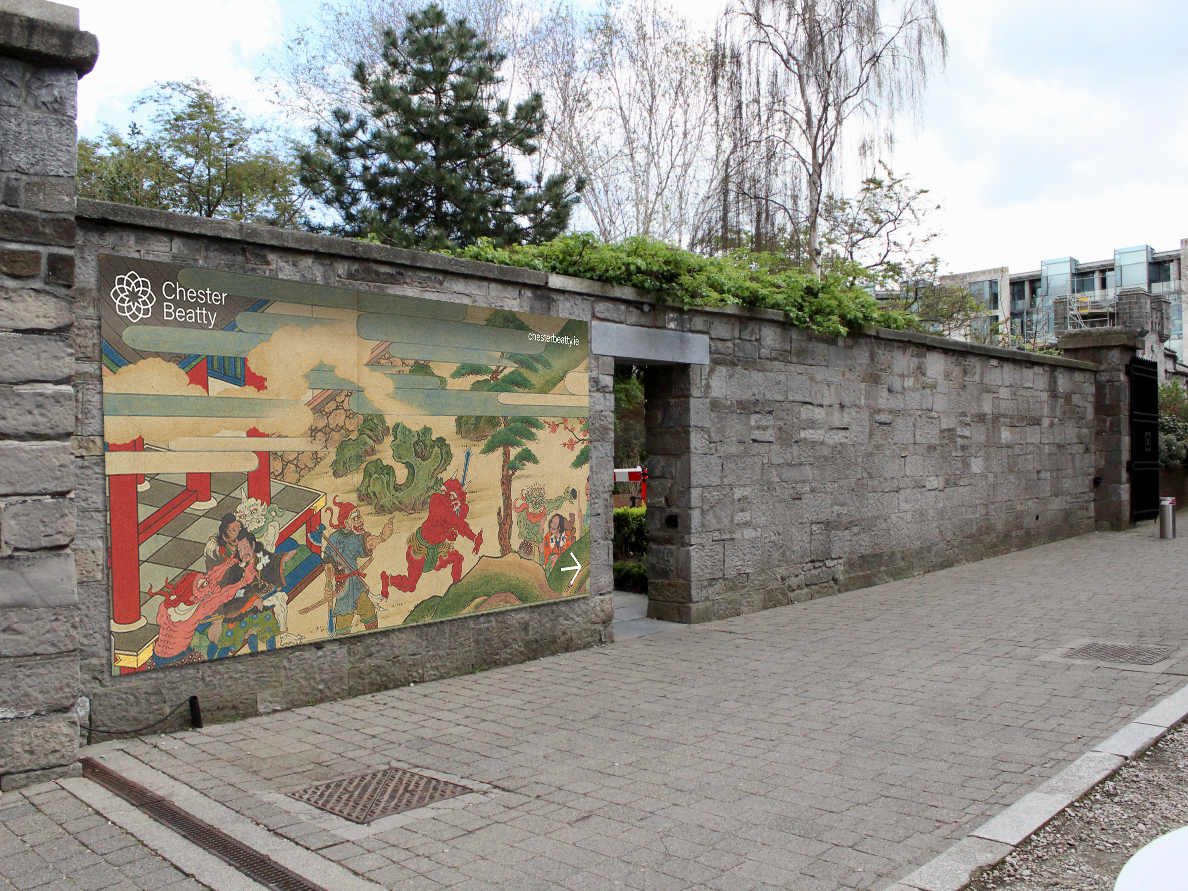
I incorporated visually striking artefacts from the museum into the wayfinding to give the public a sneak-peak of the Chester Beatty museum and showcase the beauty and diversity of the collections. I ensured the artefacts had great contrast against Dublin's grey landscape.
Enhanced Visitor Experience
Visual Inspiration
Floor Plan and Form Sketch
Floor Plan
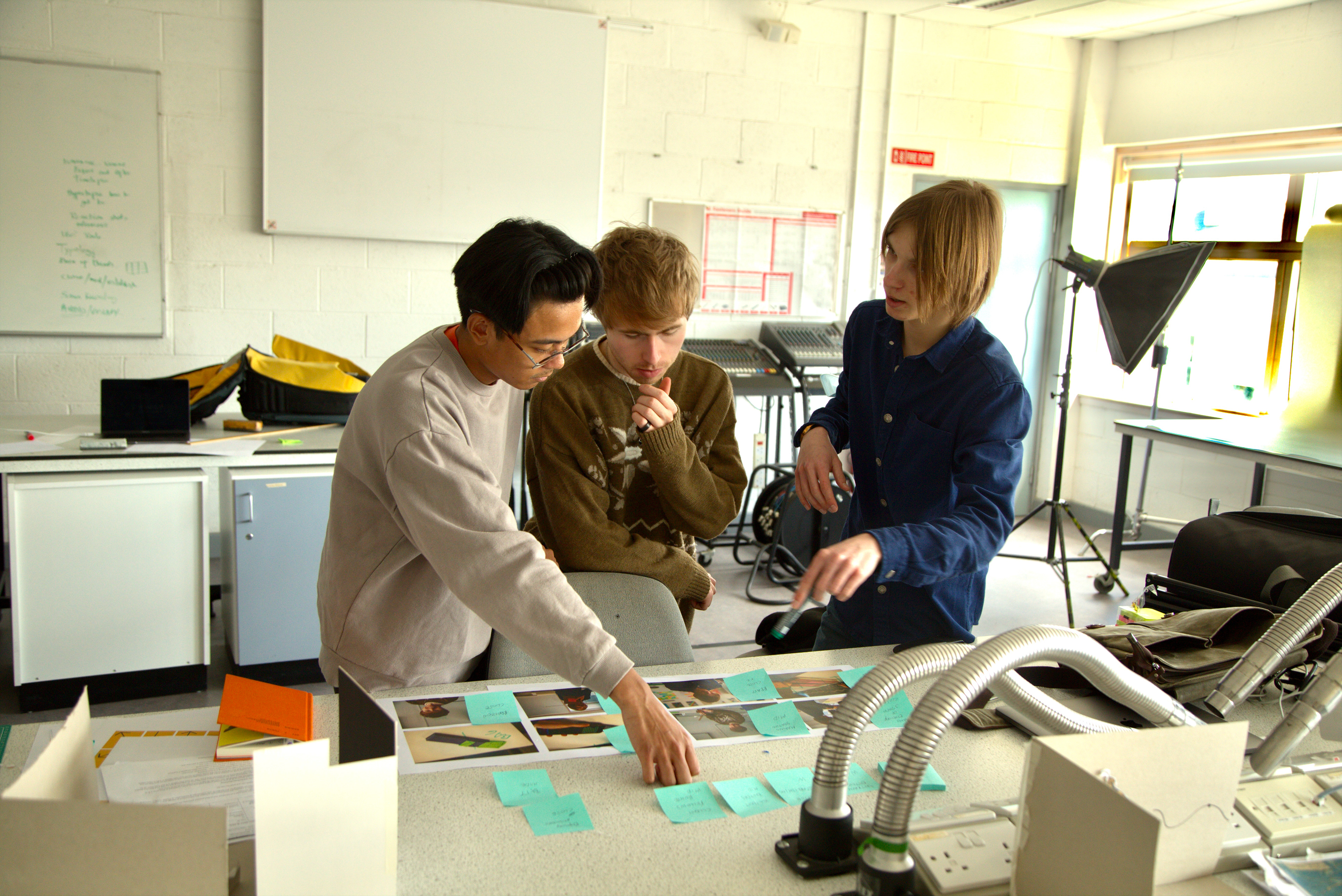
I also directed a customer scenario to envision how a customers would purchase in this pop-up shop.



I created a miniature model of the outdoor pop-up shop inspired by a mandala, reflecting the Chester Beatty logo. This design also nods to the museum’s wooden wayfinding and its mission to showcase ancient and traditional artefacts.
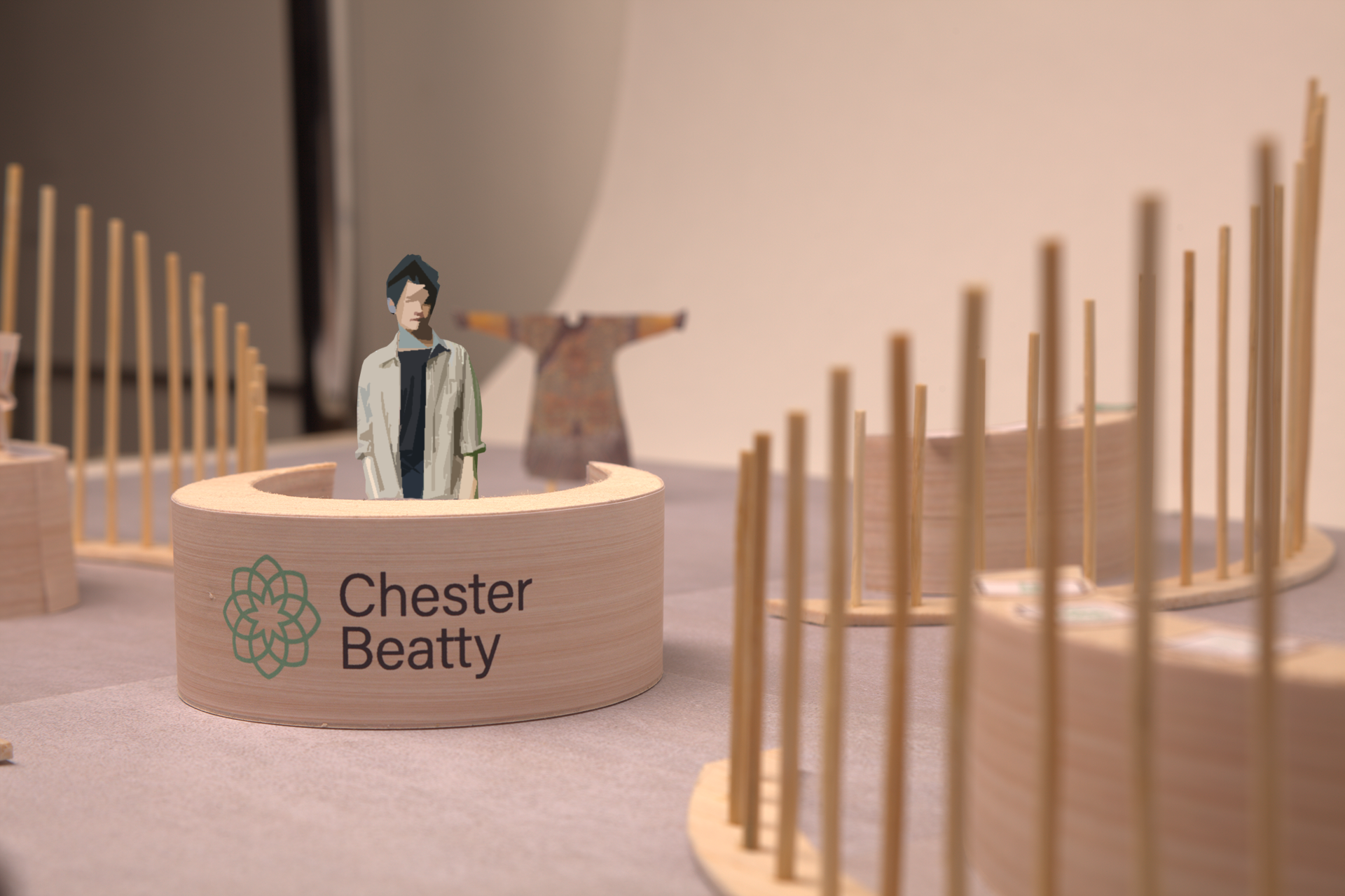
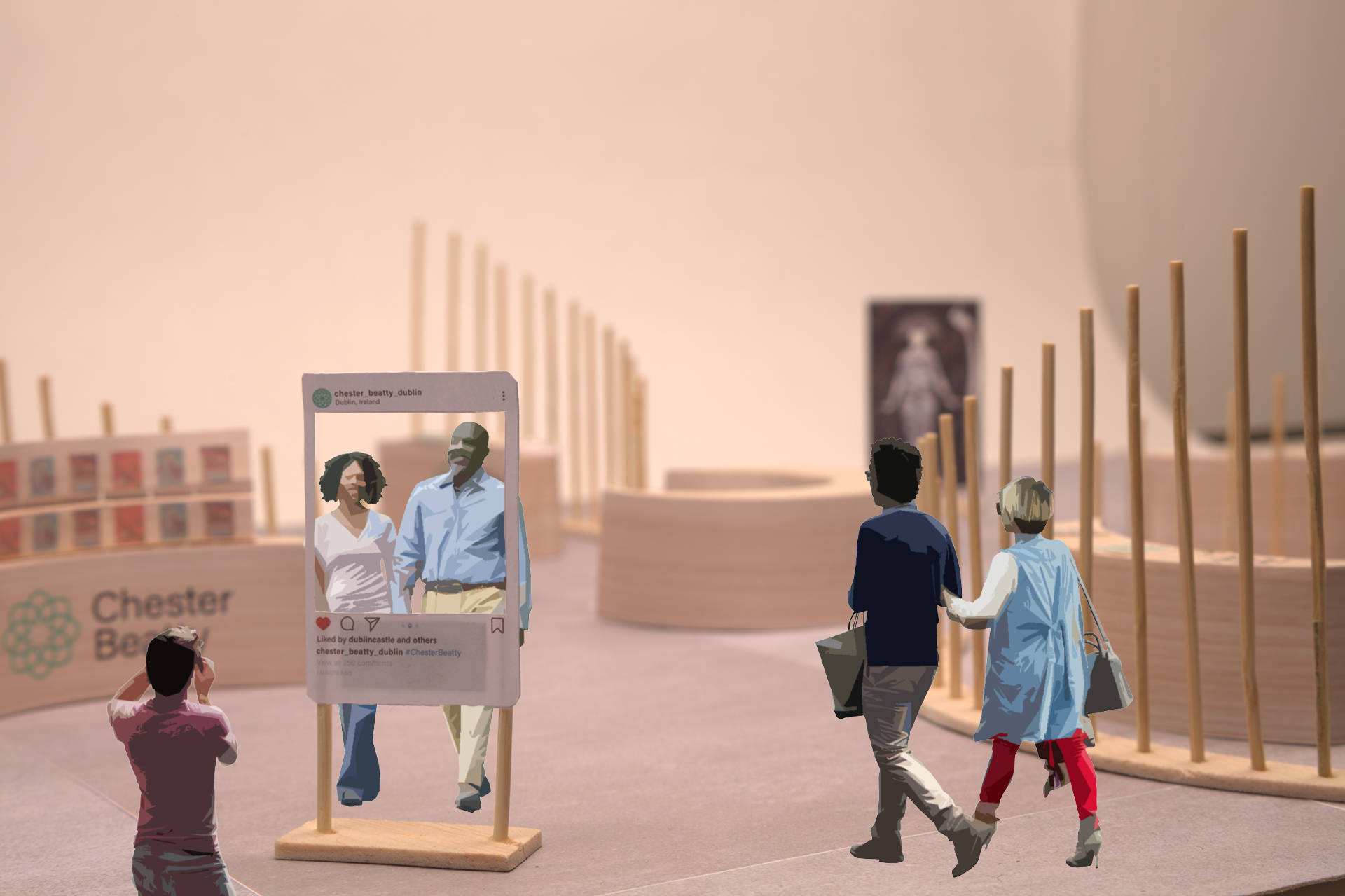
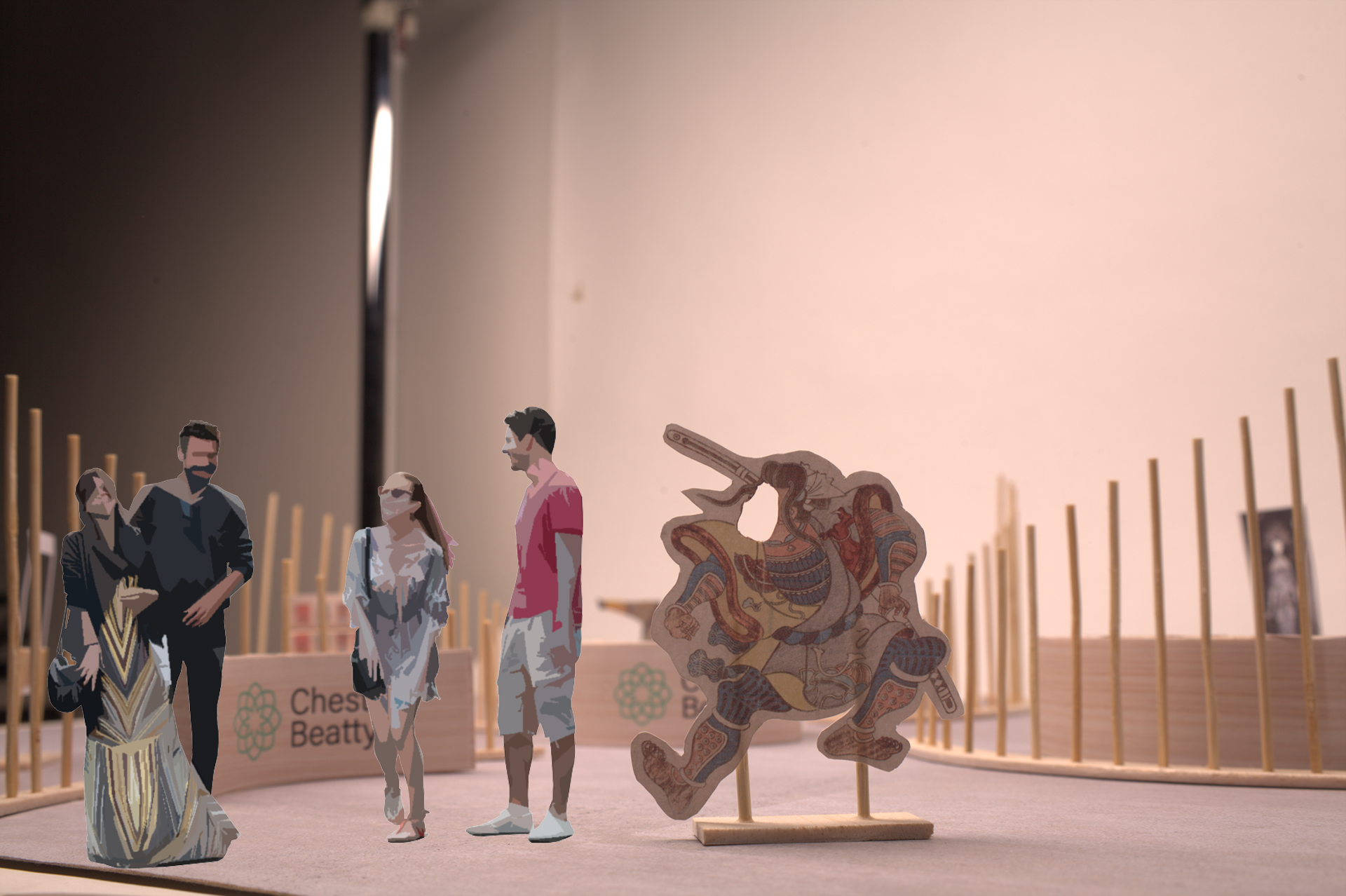

Interpretive Installation
• Immersive narrative experience in the theatre room that projects immersive versions of artefacts from the museum, designed to primarily engage children, reduce museum fatigue and provide photo opportunities for social media promotion.
• Interactive information panels telling the history and narratives of Chester Beatty, Japanese samurai, and Chinese dragons in an engaging way.
• Guided exploration – Panels will direct visitors to Level 1, where they can see samurai and dragon artefacts.
• Ambient music to create a calming atmosphere, enhancing focus on visuals and information.
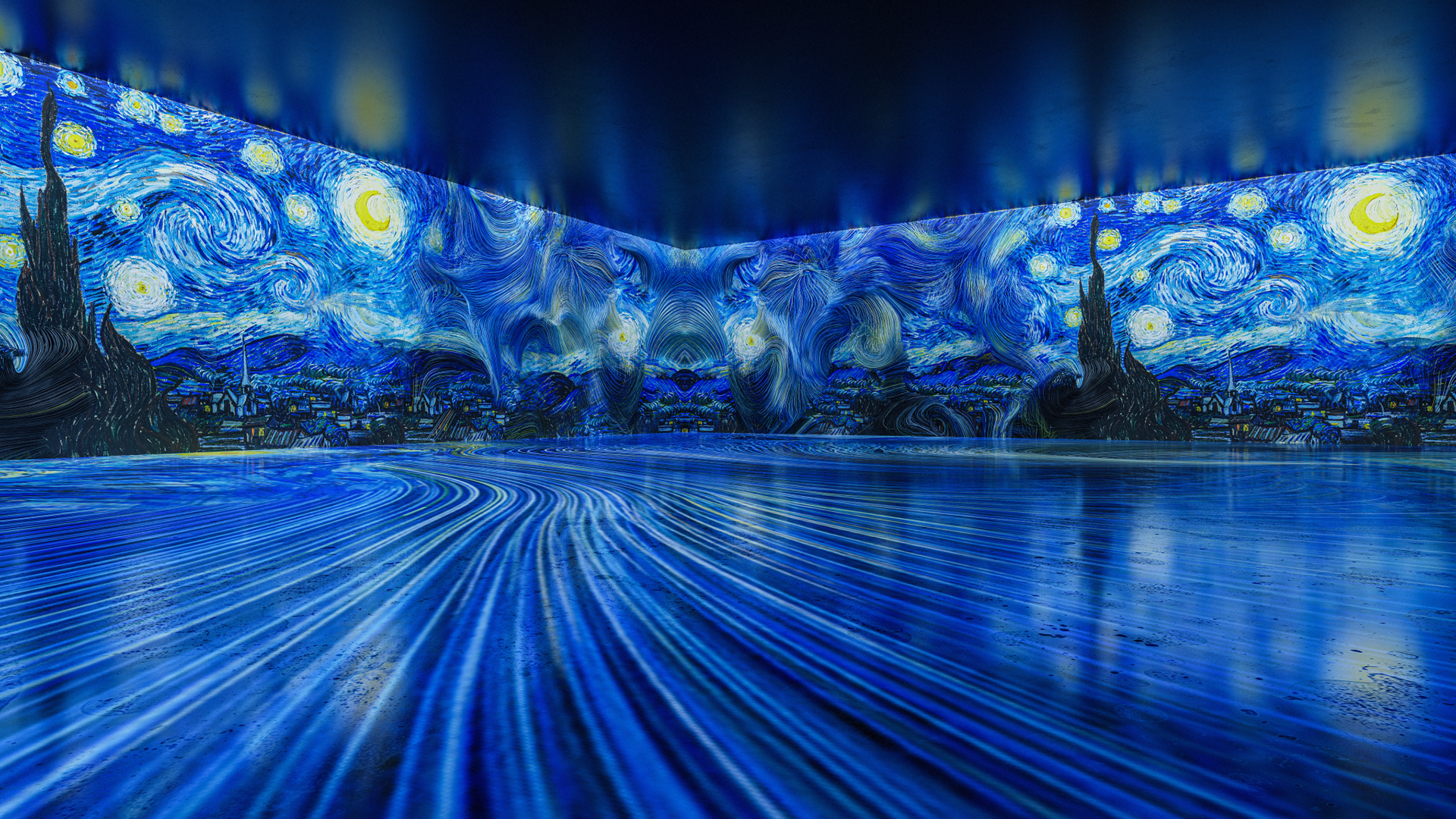
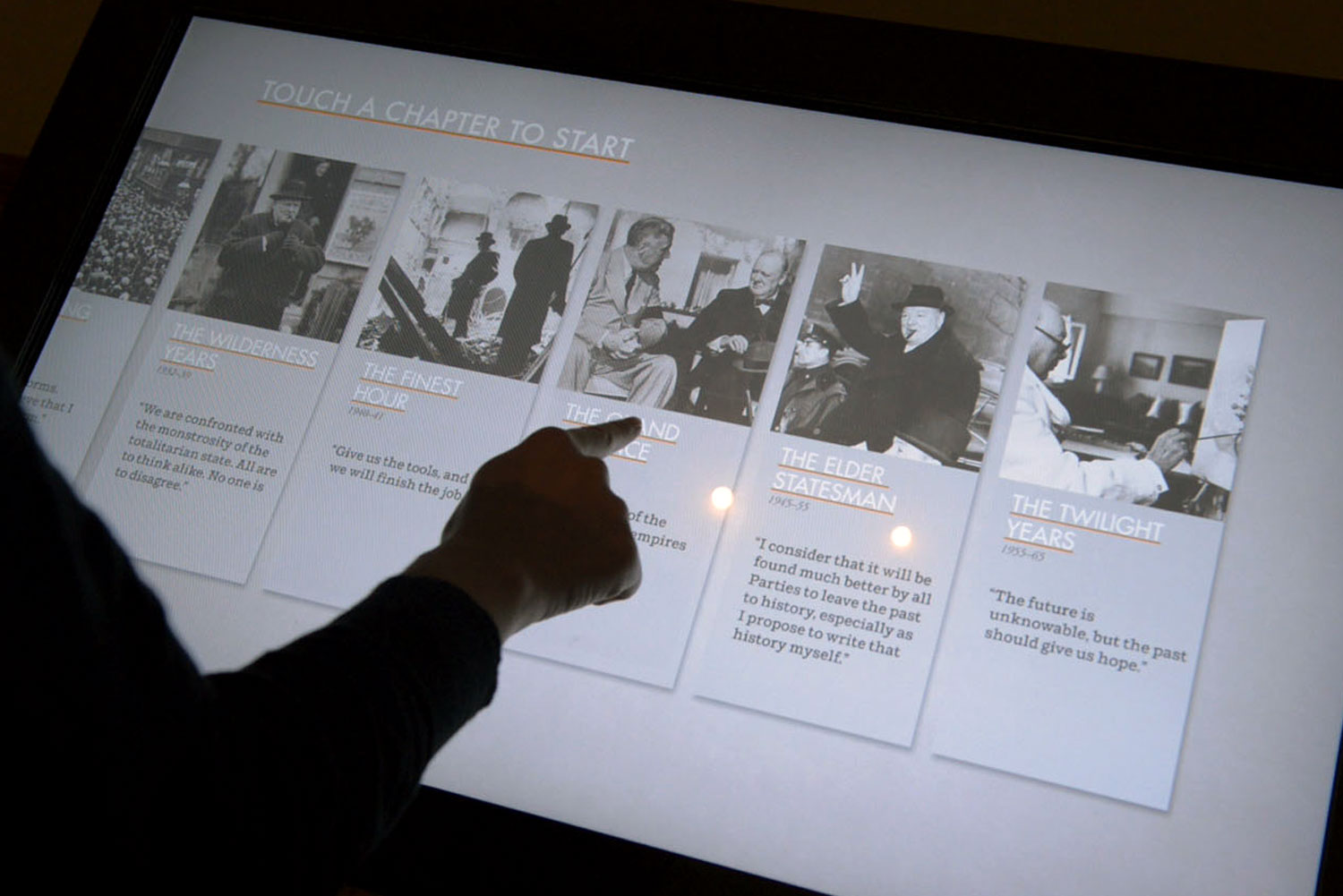
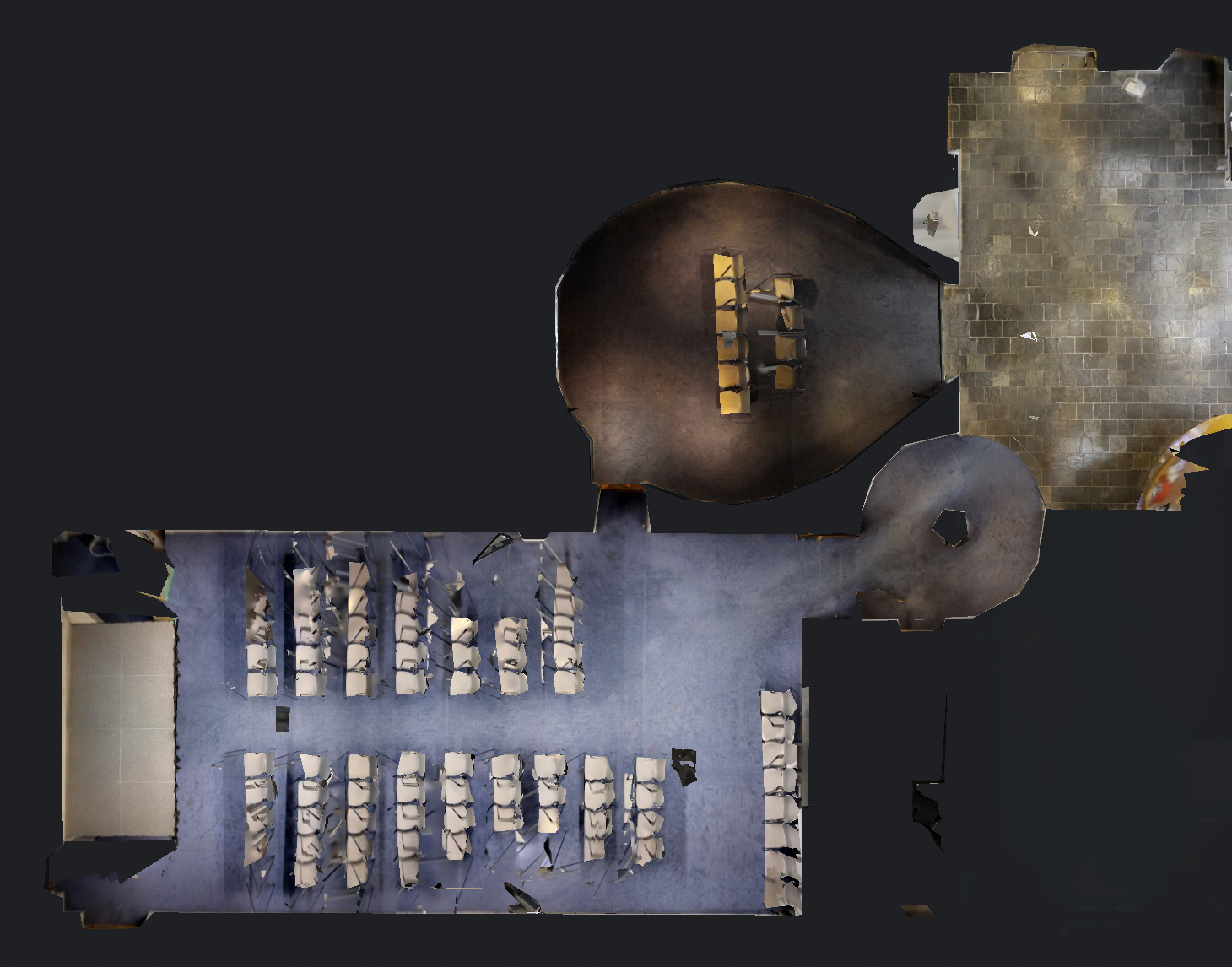

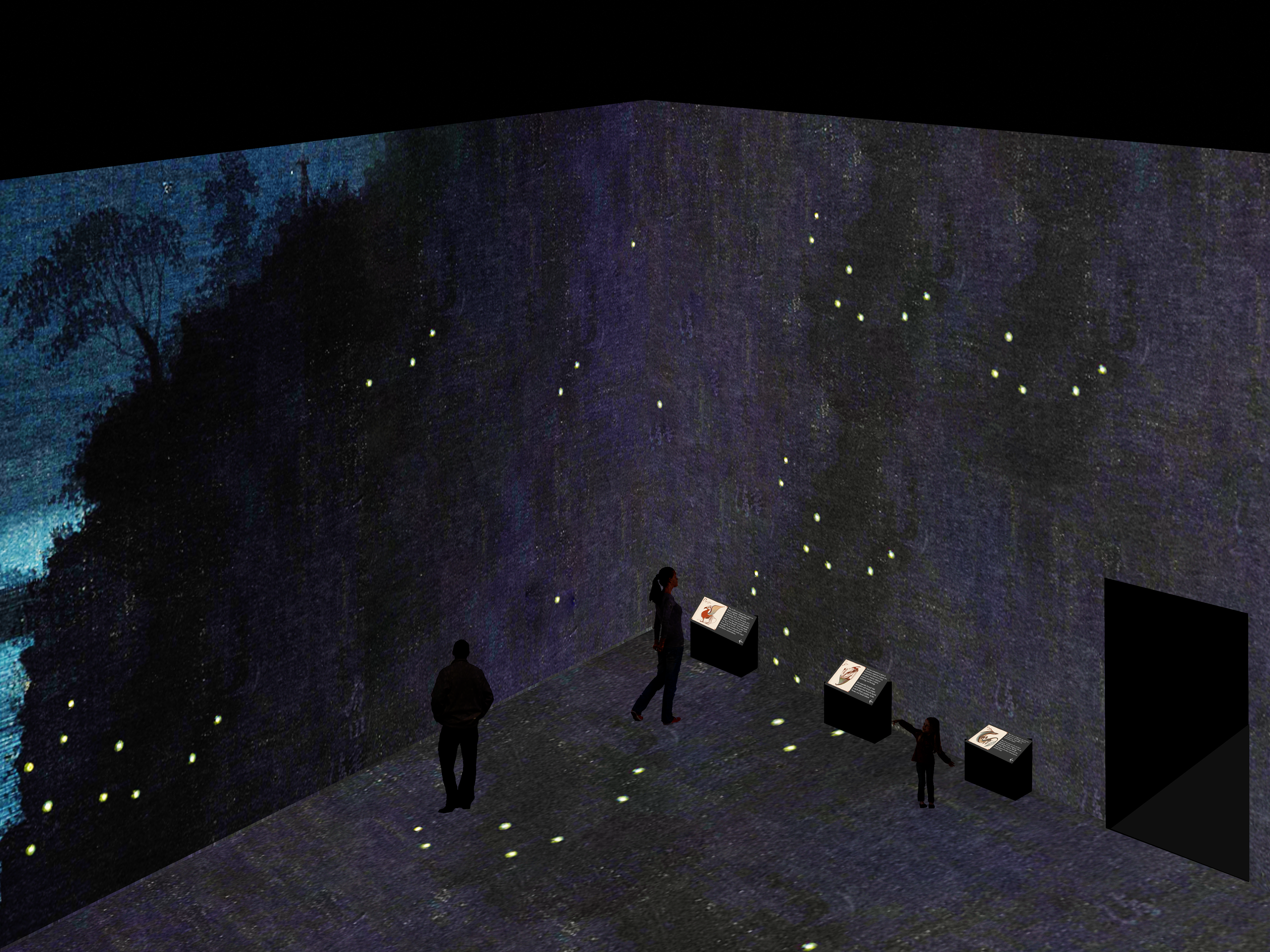
Key Learnings
Strengths
I focused on visual research and provided thoughtful responses throughout the project. The posters and banners were carefully curated, with a sensitive approach to design. I created a beautiful visitor experience, paying close attention to materials to enhance the atmosphere. The 3D form demonstrated a strong iterative process, with effective prototyping and high-fidelity models. The immersive experience concept was engaging, with a clear narrative and a strong focus on the audience’s needs.
Areas for Improvement
The interpretive immersive space has great potential, but it wasn’t given the same attention and care as the Visitor Experience, leaving it feeling somewhat incomplete. The design system was not fully consistent, and the immersive designs could benefit from further refinement. I also need to print out research and work throughout the project for better presentation and clarity.